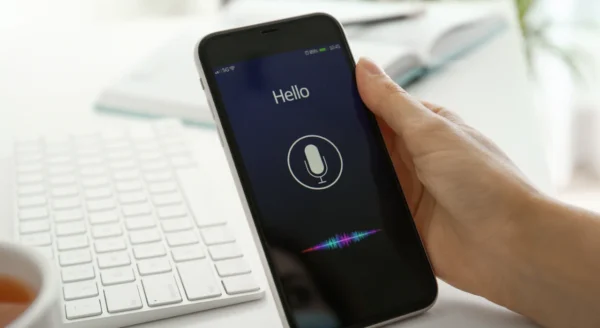Urmish Vaishnv
“Vaccines cause infertility.” “Hospitals inflate bills unnecessarily.” “Natural remedies can cure cancer.”
You’ve heard them all. You’ve probably seen them spread like wildfire on WhatsApp groups, Facebook comment sections, and even in misinformed media reports. In an era where a viral tweet can undermine years of medical research, healthcare brands are facing their biggest marketing challenge yet: the war against misinformation.
The internet is a double-edged sword—a powerful tool for patient education and a dangerous breeding ground for medical myths. And the numbers prove it:
Reports state that nearly 60% of patients make healthcare decisions based on information they find on social media—without verifying sources.
The damage? Declining patient trust, public health risks, and a growing hesitancy toward medical institutions.
Why Fighting Misinformation Should Be Your #1 Healthcare Marketing Strategy
If hospitals, clinics, and healthcare organisations want to maintain their credibility, they can’t just sit back and hope that misinformation fades away. They need to counter it actively.
But here’s the problem—traditional marketing isn’t enough anymore.
- Generic trust-building campaigns don’t work. Patients demand transparency, proof, and real engagement.
- Medical myths travel faster than facts. The World Economic Forum found that false health information spreads six times faster than factual reports.
- Trust is shifting from institutions to individuals. Patients are more likely to believe an influencer or a patient testimonial over an official hospital website.
So, how can healthcare brands win back trust, correct misinformation, and market themselves effectively?
Let’s dive into the data-driven strategies that top hospitals, pharmaceutical brands, and health tech companies use to fight back.
1. Own the Conversation Before Misinformation Does
You’re already too late if you’re only reacting to misinformation after it spreads. The most innovative healthcare brands are proactive—dominating search results and social media before falsehoods take hold.
How?
- SEO for patient education: Identify the top-searched medical myths in your specialty and create fact-based, patient-friendly content that ranks first on Google.
- Pre-bunking, not just debunking: Instead of constantly playing defense, preemptively address concerns before they go viral.
- Own key social media spaces: Run Q&A sessions, explainer reels, and short myth-busting content in regional languages to reach diverse patient groups.
2. Put a Face to the Facts: The Rise of Doctor-Influencers
Patients no longer trust corporate statements—they trust people.
That’s why healthcare brands investing in real, relatable voices—including doctors, nurses, and patient advocates—are winning the battle against misinformation.
How?
- Empower your own medical professionals: Hospitals should train doctors and nurses to be social media advocates, answering common patient questions online.
- Leverage “White Coat Influencers” – These are healthcare professionals who already have a social following. Partnering with them helps fight myths in a relatable, non-corporate way.
- Use real patient testimonials – People are more likely to believe first-hand experiences from fellow patients than an ad campaign.
3. Fight Misinformation Where It Spreads: Social Media & WhatsApp
Most medical myths start in viral WhatsApp forwards, influencer podcasts, and Facebook conspiracy groups. Healthcare brands that want to control the narrative need to meet misinformation where it lives.
How?
- WhatsApp fact-checking bots: Hospitals and clinics can create automated myth-busting chatbots where patients can send health-related questions and get verified answers instantly.
- Partnering with social media platforms: Meta (Facebook, Instagram) and YouTube now flag and downrank false health information. Healthcare organisations should work with these platforms to report misinformation efficiently.
- Launch hyper-local campaigns in regional languages: Misinformation spreads faster in non-English-speaking communities where reliable sources are scarce.
4. Transparency Wins: Show Your Sources & Data
The era of “Because we said so” healthcare marketing is over. Patients now expect proof, transparency, and receipts.
How?
- Cite peer-reviewed sources in patient education content.
- Break down complex medical topics into digestible formats like animations, infographics, and explainer videos.
- Make pricing & treatment processes transparent – Many patients distrust hospitals due to unclear billing practices. Being upfront about cost estimates, insurance options, and procedures builds credibility.
5. Make Medical Myth-Busting a Brand Identity
Some of the most trusted names in healthcare today are known for actively debunking misinformation.
How?
- Create an ongoing “Myth vs. Fact” campaign across all platforms.
- Host live “Ask the Doctor” sessions where patients can submit questions and get real-time expert answers.
- Collaborate with schools & community leaders to integrate medical myth-busting into public education programs.
Final Thoughts: Trust Must Be Earned, Not Assumed
Patients today don’t automatically trust hospitals, doctors, or pharmaceutical companies—and for good reason.
To rebuild credibility in the age of misinformation, healthcare brands must do more than just advertise their services—they must actively fight for the truth.
Because if they don’t, someone else will.

Evolving Brand Ambassadors: The Power Of Internal Marketing In Hospital Growth
This program is currently disabled. Please explore AHMP India Foundation’s other healthcare marketing initiatives and upcoming training events.

The Crucial Role of Marketing Audits in Healthcare
In the rapidly evolving healthcare industry in India, where challenges such as high operational costs and competitive pressures, the importance of efficient and effective marketing cannot be overstated. A key strategy to navigate these complexities is conducting a thorough marketing audit. Let’s delve into why and how a marketing audit can be a game-changer for healthcare organizations.

You are what you measure! The Vital Signs of Healthcare Marketing
While not everything in healthcare marketing is quantifiable—such as customer, doctor, or employee loyalty—there are tangible metrics that can guide and monitor a business’s current status and open up new possibilities for growth and correct implementation of marketing plans.

The Art of Healthcare Branding: Creating Lasting Impressions in the Medical World
In India’s bustling and diverse healthcare landscape, with cutting-edge medical technologies, the challenge for healthcare providers to distinguish themselves is even more pronounced. Amidst this rich tapestry of medical services, branding isn’t just a luxury; it’s a necessity for survival and success.

Unveiling the 5 C’s of Effective Healthcare Marketing Strategy
In the intricate landscape of healthcare marketing, clarity in strategy is not just beneficial; it’s essential. A well-defined marketing strategy is an integrated pattern of decisions that outlines an organisation’s approach to products, markets, activities, and resources. This strategic clarity is crucial in creating, communicating, and delivering value to customers, thereby enabling the organisation to achieve its objectives.

Talking the Talk: Mastering Voice Search Optimization in Healthcare Content Marketing
With healthcare content marketing, staying ahead means embracing the latest trends. Currently, Voice Search Optimization (VSO) is making waves in the digital age. Did you know that your voice is the new keyboard? Data shows that an astonishing half of the population in the United States is already conversing with their devices daily. In India, voice search queries in India have grown 270% year-over-year.

